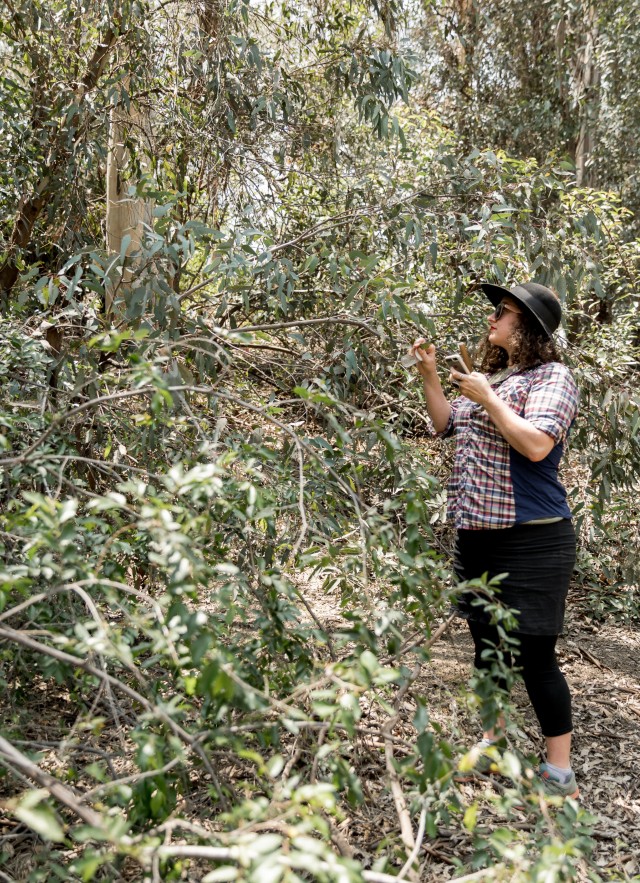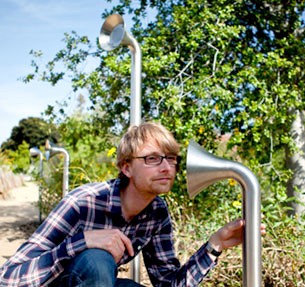BE ADVISED: On Saturday, April 20 and Sunday, April 21, nearby events at Exposition Park and the University of Southern California will impact traffic, parking, and wayfinding in the area. Please consider riding the Metro E (Expo) Line and exiting at USC/Expo station.

Trees don't have heartbeats. You can't put a stethoscope up to a tree trunk and expect to hear that familiar dull thumping that gently insists, "I am alive." At least I'm pretty sure you can't, no matter what hardcore LOTR fans say, Ents do not exist! However, this doesn't mean you shouldn't try putting a stethoscope up to a tree and listening. What do you think you would hear?
Alex Metcalf knows. Okay, so I know that silver trumpety thing isn't a stethoscope, but it would be really gross for a museum to let thousands of school children and other visitors use the same stethoscope to listen to a tree. Since we're so considerate of our visitors and we really wanted everyone to be able to listen to the inner workings of a tree, we worked with British artist Alex Metcalf, who created a listening tree installation in our new Nature Gardens by hooking up microphones to one of our coast live oaks, Quercus agrifolia. When you put your ear up to one of the four trumpets Alex installed, you'll hear one of two things. First, there's a deep rumbling sound that is the amplified sound of the oak vibrating. If you're lucky enough, especially if you are visiting on a warm day, you'll likely also hear some tiny popping that is the sound of "water passing through the cells of the xylem tubes and cavitating as it mixes with air on its way upwards."

Xyle-what you say? You see, trees have a system a bit like our veins that moves water, dissolved nutrients, and food between the leaves, trunk, and roots. Botanists call it a vascular system and it consists of two main cell types, xylem (ZI-lem) and phloem (FLO-em). Xylem tubes are the main way trees and other vascular plants get water from roots to leaves and other parts. Alex explains, "as the leaves lose the water through evaporation the cells below the leaf become drier and they in turn pull water from the next cells below, this carries on down the tree all the way down to the roots. The water molecules cling together and form a water chain from the leaves to the roots under tension-cohesion." He continues, "The Tree Listening Project aims to provide an experience that links both science and art by engaging the public with what happens inside a tree, and to excite and inspire a keen interest in trees." Hopefully this has inspired a keen interest in visiting our Nature Gardens to listen for yourself. So go grab your bike, jump on a bus or the train, or put the pedal to the metal in your car and come on down to the Nature Gardens and hear our oak tree telling you, "I am alive!"